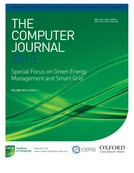-
Views
-
Cite
Cite
Linghe Kong, Xiao-Yang Liu, Meixia Tao, Min-You Wu, Yu Gu, Long Cheng, Jianwei Niu, Resource-Efficient Data Gathering in Sensor Networks for Environment Reconstruction, The Computer Journal, Volume 58, Issue 6, June 2015, Pages 1330–1343, https://doi.org/10.1093/comjnl/bxu054
Close - Share Icon Share
Abstract
Environment reconstruction is to rebuild the physical environment in the cyberspace using the sensory data collected by sensor networks, which is a fundamental method for human to understand the physical world in depth. A lot of basic scientific work such as nature discovery and organic evolution heavily relies on the environment reconstruction. However, gathering large amount of environmental data costs huge energy and storage space. The shortage of energy and storage resources has become a major problem in sensor networks for environment reconstruction applications. Motivated by exploiting the inherent feature of environmental data, in this paper, we design a novel data gathering protocol based on compressive sensing theory and time series analysis to further improve the resource efficiency. This protocol adapts the duty cycle and sensing probability of every sensor node according to the dynamic environment, which cannot only guarantee the reconstruction accuracy, but also save energy and storage resources. We implement the proposed protocol on a 51-node testbed and conduct the simulations based on three real datasets from Intel Indoor, GreenOrbs and Ocean Sense projects. Both the experiment and simulation performances demonstrate that our method significantly outperforms the conventional methods in terms of resource efficiency and reconstruction accuracy.




